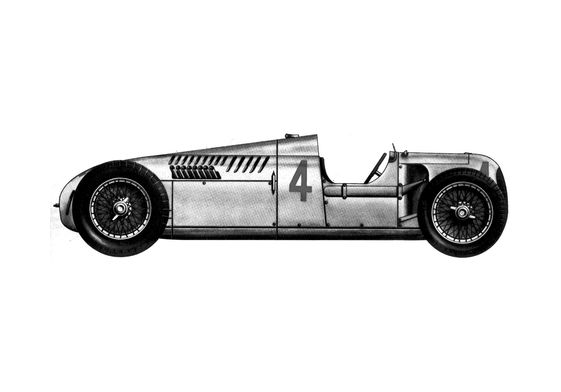
Auto Union C Type GP OW 1936
- jpg
Specifications Auto Union C Type GP OW 1936 blueprint
The Auto Union C Type GP OW 1936 is a classic German racing car from the early 20th century. Originally designed in 1936 as part of the new Auto Union racing program, the C Type was the first ever purpose-built race car for Auto Union, and is considered by many as one of the most iconic pre-war racing machines ever made. The C Type was a semi-monocoque design, with a lightweight steel tube frame consisting of an oval tubing, running around the circumference of the vehicle. This was covered with a lightweight aluminium body, which was built by a few specialist companies, including Porsche and BFW. A four-cylinder supercharged engine was mounted in the back of the car, capable of producing an astonishing 455 horsepower – far beyond the capabilities of any contemporary racing machine. This engine combined with the lightweight body made the car incredibly fast, and the C Type was capable of reaching speeds of up to 230km/h. In terms of aerodynamics, the C Type was fitted with a small frontal spoiler, along with a small rear wing, both of which were designed to help generate downforce at high speeds. The car also featured a low, open wheelbase, which enabled it to turn quickly and make tight turns. In terms of its looks, the C Type is often considered one of the most stunning pre-war racing cars ever created. Every aspect of the car was designed with speed in mind, and it had an incredibly stylish design. The racing livery was created by a company named Heuer, and featured a distinctive red, yellow and white paint scheme. The Auto Union C Type GP OW1936 is a truly iconic race car, and will forever be known as one of the most iconic machines of pre-war German racing.

Careful measurement of the actual dimensions of the models, when creating their sketches, guarantees the high accuracy of our drawings, which is at the level of 94% - 99%.

When creating working drawings, all proportions of the depicted objects are strictly maintained.

You no longer need to create individual drawings of parts from scratch. The required changes to existing works are easily made using graphic editors.

The copyright holder permits the use of ready-made drawings, acquired under a free license, in the development of projects, scientific works and the preparation of presentations.


